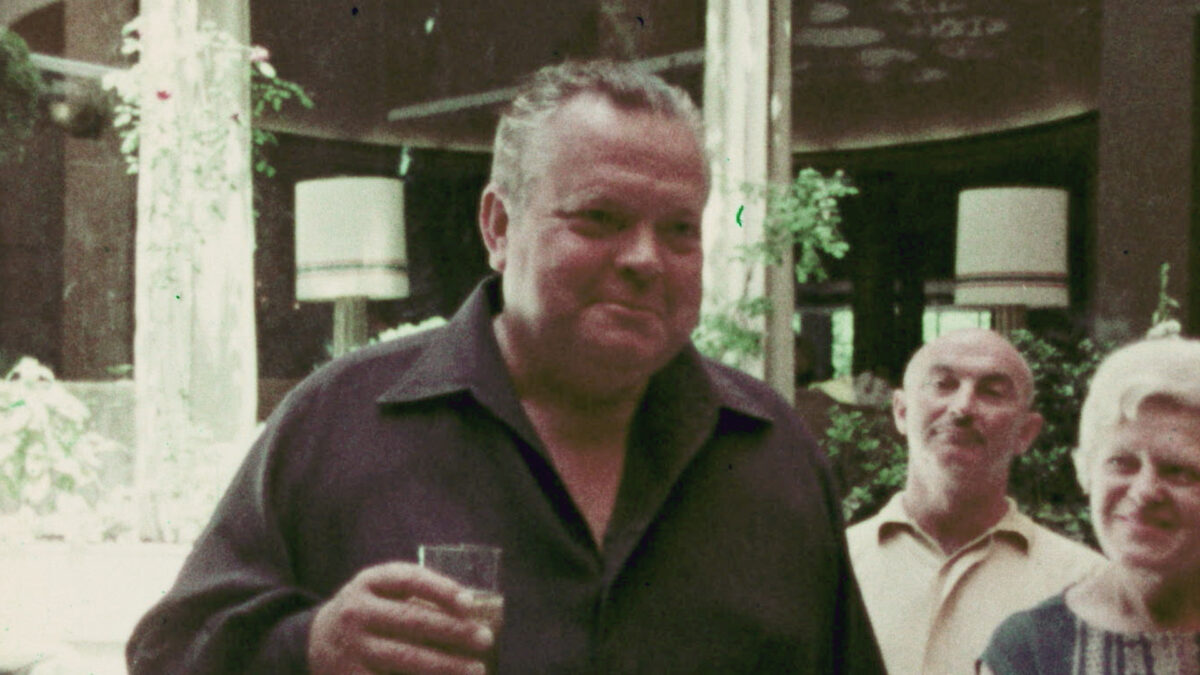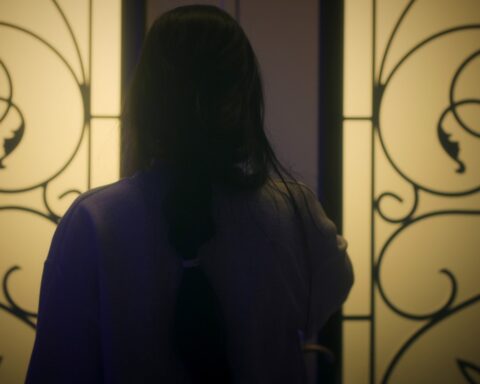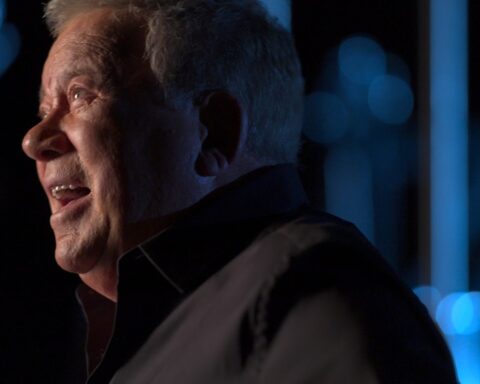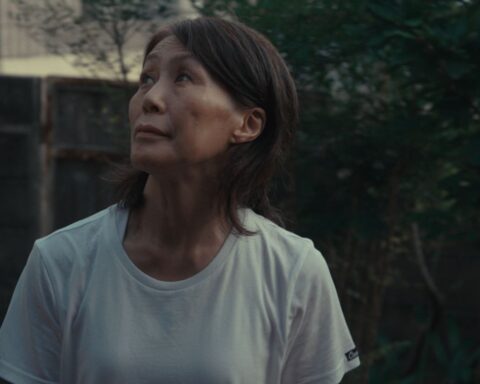Cinema history is haunted by its vast number of lost films, including an estimated 90% of silent films and 50% of sound films before 1950. These films are ghosts—tragic, disembodied—whose traces cling to bits of paper, celluloid and memory. But there is another kind of film which is not lost, but unfinished. These films are less like ghosts than obstinate zombies that continue to eat at our brains with questions of what might have been.
A couple of cold cases have been reopened by Netflix last fall, in which the undead films were propped upright and managed to speak for themselves. One is a landmark: Orson Welles’ final feature The Other Side of the Wind, assembled by his friends, along with the accompanying documentary, They’ll Love Me When I Dead. The other reborn film is embedded in a documentary, Shirkers, by Singapore native Sandi Tan, who won the World Cinema Documentary Directing Award at Sundance in 2018 for her debut film.
Behind these two are a long line of unfinished films—several others by Welles, Nicholas Ray’s We Can’t Go Home Again, Alejandro Jodorowsky’s Dune — that exercise a force on film history and create new works, especially documentaries, that have helped to midwife them into cinemas. The questions of finished and unfinished, to some degree, are concerns that are both commercial (When is a film releasable?) and semantic (Is it a dead-end or a work-in-progress?). Or it may be that, as the poet Paul Valéry said, a work of art is never finished in the eyes of its creator, though there comes a point where it is either abandoned or delivered to the public. What follows is an (incomplete) survey of some of these undead films and the stories they still tell.
Shirkers
This documentary is about a fictional movie, also called Shirkers, that Tan and her then-teenaged friends Jasmine Ng and Sophia Siddique made back in 1992. The original film was steeped in the influence of VHS tapes of films by Jim Jarmusch, David Lynch and Wim Wenders, as well as the cult novel The Catcher in the Rye. The 19-year-old Tan wrote and starred in the film as a teen assassin who kills bad adults by pointing her finger at them. The footage from the original film, a kind of candy-coloured dreamy fantasy, does not look like a lost masterpiece, though its backstory serves as a resonant post-#MeToo variation on the story of the megalomaniac director and the little people whose work “make it possible.”
The director of the original Shirkers was a 40-something American film instructor, Georges Cardona, who claimed among other tall tales, to be the model of James Spader’s character in sex, lies and videotape (1989). Cardona absconded with the footage and ghosted Tan and her friends. Years later, the lost footage, without sound, was returned to her by Cardona’s widow.
The documentary becomes a kind of crime story, an attempt to explain why the young women’s dreams are held captive by an older man’s insecurity and jealousy. The three young women were precocious talents: Lam went on to write a successful novel (The Black Isle, 2012); Jasmine Ng went on to co-direct a feature (Eating Air, 1999) and numerous TV docs; and former producer Sophia Siddique Harvey, is the chair of the film department at Vassar. It’s reasonable to assume their artistic ambitions were derailed by Georges’ betrayal: “There was a piece of my spirit that died,” says Harvey. Tan came to see Cardona as a Nosferatu figure, “trying to become immortal by feeding on young people’s dreams.”
It’s a phrase that echoes through the late films of both Welles and Nicholas Ray.
The Other Side of the Wind and Welles’ legacy of unfinished films
There is something of a formula to a behind-the-camera drama. Traditionally, the director is male, visionary, fanatical to the point of danger. We see the template followed in Eleanor Coppola’s Hearts of Darkness: A Filmmaker’s Apocalypse (1991) and her husband Francis Ford Coppola’s film Apocalypse Now (1979), and in Les Blank’s Burden of Dreams (1982), about the five-year ordeal of Werner Herzog’s Fitzcarraldo (released the same year).
Welles embodies this kind of Promethean filmmaker, stealing fire at great personal cost. His reputation is not only as the boy wonder who produced arguably the greatest Hollywood movie ever made, Citizen Kane (1941), as well as a canonical filmography (The Magnificent Ambersons [1942], The Lady from Shanghai [1947], Touch of Evil [1958], Chimes at Midnight [1965]). But he’s almost as famous for the works he did not complete: It’s All True, Don Quixote, The Deep, The Merchant of Venice, Moby Dick, The Dreamers and The Other Side of the Wind.
The release of The Other Side of the Wind last fall was major news—as much, perhaps, for its contribution to cinema history as for the film itself, though it did end up on several critics’ 2018 top-10 lists (Film Comment, Los Angeles Times, The Hollywood Reporter, Vanity Fair). Like Citizen Kane, The Other Side of the Wind is an investigation of a man after his death, and its fragmented editing style, similar to Welles’ F for Fake (1973) uses shattered-mirror perspectives similar to those in The Lady from Shanghai. The film follows the 70th birthday and final day in the life of Jake Hannaford (John Huston), who is killed in a car crash, either by drunken accident or suicide. Much of the film follows the course of his party in an Arizona house, filled with hangers-on, journalists and younger filmmakers (Claude Chabrol, Dennis Hopper, Paul Mazursky). A documentary crew can be seen shooting the events, including the sequence where
Hannaford strikes a “lady critic” (Susan Strasbourg, in a role inspired by Pauline Kael) for suggesting he’s a closet homosexual. Adding credence to the idea that the film is partly autobiographical, we see a drunken Hannaford begging for help from his young acolyte, a former journalist turned hotshot director, Brookes Otterlake (Peter Bogdanovich, who inspired the role).
Hannaford is trying to revive his career by making a pretentious European-style art film, also titled The Other Side of the Wind, with lots of chases, softcore sex and lingering shots of the backside of Welles companion and co-writer Oja Kodar.
Alternately fascinating and cringe-worthy, The Other Side of the Wind represents a plausible salvage job of a film made in the early seventies, lost in ownership battles and eventually recovered. It is assembled from memories, script notes by Bogdanovich and the producers Frank Marshall and Filip Jan Rymsza. The process is chronicled in a 37-minute documentary Marshall produced about the restoration, A Final Cut for Orson: 40 Years in the Making.
Even more useful is the midwifing Morgan Neville documentary They’ll Love Me When I’m Dead, inspired by Josh Karp’s book Orson Welles’s Last Movie, which serves as an essential viewer’s key to thecharacters and background. The party scenes were shot at a private home next door to the one Antonioni used in Zabriskie Point (1970).
The crew was young and green and Welles worked them to the point of hospitalization from exhaustion. (“He seemed to be doing everything he could to alienate as many people as possible,” one former crew member recalls.) Over the six-year shoot, Welles came to resent his acolyte Bogdanovich’s success. Most of the interview subjects had the impression that the movie was a mess and sometimes personal and petty. Within the film, Hannaford’s dalliance with a teenager (non-actress Cathy Lucas) was dramatized as a not very subtle response to Bogdanovich’s relationship with Cybill Shepherd, whom he made into a star in The Last Picture Show (1971). Bogdanovich and Welles fell out by the end of the shoot, though they later reconciled somewhat. What would Welles have made of Bogdanovich getting the last word? If Orson Welles in the 1980s had regained the footage earlier, would he have made a different film? Speculation is unlikely to be more definitive than trying to nail down the meaning of Rosebud.
We Can’t Go Home Again
Much like Orson Welles, the director Nicholas Ray (In a Lonely Place [1950], Johnny Guitar [1954], Rebel without a Cause [1955]) was born in Wisconsin, worked for the Federal Theatre Workshop in the 1930s with John Houseman, made his film debut at RKO, was investigated by the FBI and, in his late career, fled to Europe where he was lionized by the directors of the French New Wave.
By the early 1970s, he had taken a teaching job, which he attempted to leverage into a communal experimental film, officially directed by “Us.” In We Can’t Go Home Again (1972–1979), the students and Ray played versions of themselves, putting their drama on stage. Ray’s film had several images at once play on the screen, sometimes colourized or distorted to the point of unintelligibility. The strange social experiment, a sort of cinematic Electric Kool-Aid Acid Test, is rule-breaking in uncomfortable ways. Ray and most of the students were living communally. The female students are frequently nude. Student actress Leslie Levinson, the default lead actress, says at one point that she’d turn a trick to help finance the film, and we’re not sure if she’s acting. In another scenes, she talks about deliberately getting the clap from a drug dealer. Ray, wearing his pirate’s eyepatch, charismatic and cantankerous and self-indulgent as hell, rules over them. It is, if nothing else, a film about its time.
The documentaries around the film are excellent, and raise its status as a cultural artifact worthy of ongoing interest. They start with David Helpern’s 1975 straightforward film, I’m A Stranger Here Myself, featuring sympathetic interviews with Ray, Natalie Wood, François Truffaut and John Houseman, who talks about Ray’s precarious sensitivity and identification with the young. The major film about the aging American auteur is Wim Wenders’ 1980 film Lightning Over Water, ostensibly co-directed with the dying Ray (or, possibly, all twenty people named in the opening credits). It contains some footage from We Can’t Go Home Again, and is made in the same docu-drama spirit.
The cycle wraps up with the elegiac 2011 retrospective film, Don’t Expect Too Much by the director’s widow, Susan Ray. Throughout this cycle of films, familiar footage reappears and the students age, repeat and reevaluate their experience. The theme is Proustian: The past is lost, except when found again through art.
Alejandro Jodorowsky’s Dune
The early seventies was such a rich time for not finishing movies that it’s hard to choose the greatest. Stanley Kubrick planned Napoleon as “the best movie ever made,” and while studios balked at the proposed price tag, it did eventually result in a cool Taschen coffee table book that documents his extensive preparations.
But even Kubrick was modest compared to maverick Chilean director Alejandro Jodorowsky (El Topo [1970], The Holy Mountain [1973]), who promised “the most important picture in the history of humanity” with his adaptation of Frank Herbert’s sci-fi novel Dune. After two and a half years, the project collapsed, but, in an important sense, it did not die without issue.
There are some scraps of animation that can still be viewed, and the team of “spiritual warriors,” or artists, that Jodorowsky assembled worked on the acclaimed futuristic films Alien (1979) and Total Recall (1990). The concept book for Dune reached all the major studios and, arguably, directly influenced everything from Alien to Star Wars (1977) to Terminator (1984).
As recounted by the 84-year-old Jodorowsky in Frank Pavich’s wonderfully entertaining documentary Jodorowsky’s Dune (2013), the not-making of the film is one of the great shaggy-dog stories of film history. The director describes how he met and won over a group of collaborators including Pink Floyd (for music), rounded up a cast including Salvador Dali, Orson Welles (Jodorowsky planned a tracking shot to rival the opening of Touch of Evil), Udo Kier and Mick Jagger. All the more amazing, he never finished reading Herbert’s novel. One film Jodorowsky’s unmade epic does not seem to have influenced was David Lynch’s Dune (1984), which typically ranks as his worst work.
Persistence of Vision
“Perfection is the enemy of the good” is the lesson to draw from the fable of The Thief and the Cobbler, chronicled in Canadian director Kevin Schreck’s painstaking documentary Persistence of Vision (2012). The Thief and the Cobbler is the greatest hand-drawn animated film never finished. The immensely gifted Canadian animator Richard Williams worked on his opus, though not continually, from 1964 to 1995. After he earned a couple of Oscars for his work on Who Framed Roger Rabbit (1988), Williams got the go-ahead to make his dream project, done with exacting detail. When the production went over budget and behind schedule, Warner Bros. pulled the plug and the film was re-edited and released in two different versions, The Princess and the Cobbler (1993) and Arabian Knight (1995). There’s a fan restoration (by Garrett Gilchrist) available on the internet, which tries to get close to the original. And, in 2013, a workprint approved by Williams entitled A Moment in Time played once in Los Angeles. It proved that Williams did the cobbling while less gifted animators did the thieving.
Sergei Eisenstein’s ¡Que Viva Mexico!
In 1930, the Russian filmmaker of Battleship Potemkin (1925), Sergei Eisenstein, went to Mexico on an American tour financed by leftwing novelist Upton Sinclair (his novel, Oil! [1926–27] inspired Paul Thomas Anderson’s There Will Be Blood [2007]), with the idea of celebrating the country in an artistic travelogue. Eisenstein wanted to provide a mythic and sensual vision of Mexico’s history: full of ritual and bare bodies and death and statues, shot at bizarre angles, with intense close-ups and monumental distance shots that anticipated the style of Welles’ It’s All True (1942) and Jodorowsky’s El Topo, as well as Sergio Leone’s westerns.
By 1932, money ran out and Eisenstein was called back to the Soviet Union. Sinclair took the footage and handed it over to Sol Lesser, a producer of Tarzan movies, to chop it into three films, the best known of which was Thunder Over Mexico (1933). Over the years, there have been various edits of Eisenstein’s footage, which, as film academic Julia Vassilieva has argued, are locked in their own historical biases (humanist, social realist, post-modern). Or, as Eisenstein put it, “castrated by dirty hands.”
Jean-Luc Godard lamented in 1970 about another edit, “One might think the cavalcade of films exposed by S.M. Eisenstein in Mexico had been pillaged enough already, so that one could be left in peace to admire its dazzling remains.”
The tragic tale of ¡Que Viva Mexico! makes the case for showing respect for the undead, to allow these zombie films to remain incomplete. (Of all the great filmmakers, Eisenstein is the one who created his masterpieces in the editing suite.) In his cheeky 2007 French best-seller How to Talk About Books You Haven’t Read, the critic Pierre Bayard claims that when we say we have read or “finished” a book, it really means we can forget about it. Similarly, what’s more interesting than any particular cinematic work is the entire system of films lost, finished or unfinished, and the biographies and gossip around them. The unfinished, and therefore unkillable nature of certain historic movies defies closure, or, in commercial terms, release. At least on this side of the wind, we cannot forget them because we cannot end them and thus, they will continue to eat at our brains.












